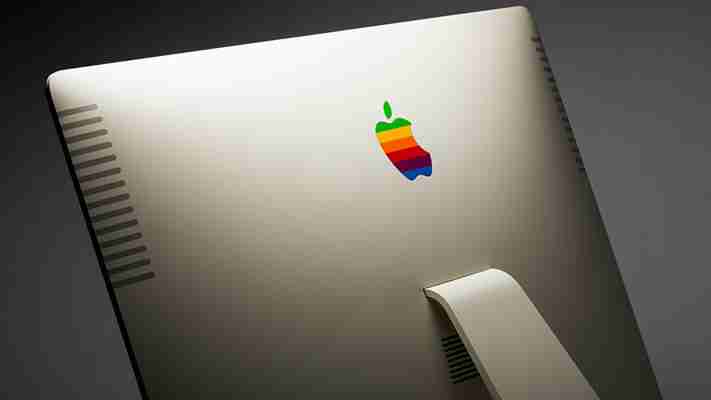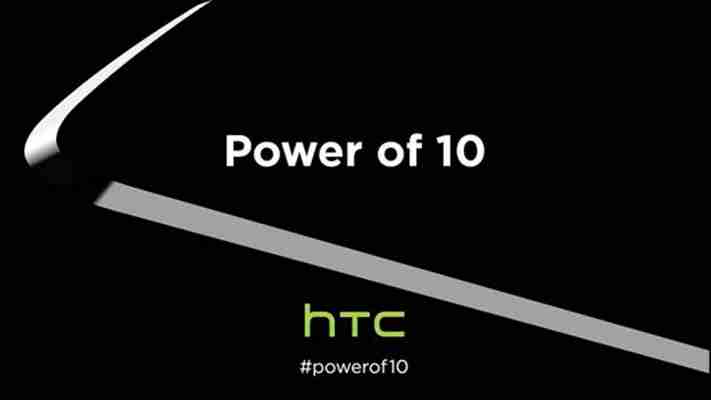This is what $1.5m worth of limited edition Apple hardware looks like
Over the past 40 years, Apple has created several game-changing devices that have shaped the way the world thinks about technology.

Along the way, the company also released special editions of a few of its products – some of which were easy to buy back in the day and a couple that commanded higher prices than a Lamborghini.
Here’s a look at a few collectible Apple devices you can get your hands on, for a total of about $1.45 million.
iPod U2 Special Edition – $80
In 2004, Apple teamed up with U2 to launch a special edition of its iPod portable music player with a red click wheel surrounded by a black enclosure as well as the band members’ signatures engraved into the mirror-finish back.
Purchase of the $349 20GB device scored you a $50 discount on The Complete U2, which Apple claimed was the first-ever digital box set. The collection included more than 400 tracks spanning the band’s discography running up to ‘How to Dismantle an Atomic Bomb’, which cost $150 on iTunes.
Two years later, Apple released an updated version of its U2 iPod, with 30GB of storage and a free coupon for 30 minutes of exclusive footage of the band, for $329.
Fast forward a decade to the present day and you’ll find that the company has killed off its iPod Classic line, much to fans’ chagrin. However, you can still find old iPods on eBay, including the 30GB U2 edition for as little as $80 in the US.
Apple IIGS Woz edition – $450
Credit: Alison Cassidy / Wikimedia Commons
Although it bore a similar moniker to its predecessors, the Apple IIGS was head and shoulders above other personal computers in the series.
Launched in 1986, the IIGS (Graphics and Sound) was the last of the Apple II line and came with a Western Design Center 65C816 2.8MHz processor with 256kB RAM, and also included 128kB of storage.
It was the first Apple computer to feature a color user interace, a Large Scale Integration (LSI) chip designed by Steve Wozniak and a sample-based synthesizer.
To commemorate the Apple II series’ 10th anniversary, 50,000 pieces of a special edition were manufactured with Steve Wozniak’s signature. If you were one of the lucky few to get a IIGS Woz, you could mail in your Apple registration card to receive a certificate of authenticity signed by Wozniak and 12 other engineers, as well as a letter from the co-founder.
Until it was discontinued in 1992, the Apple IIGS was one of the most powerful computers you could buy and one of the most revolutionary compared to its competition. Today, you can find one online for under $500.
Twentieth Anniversary Macintosh – $3,000
Credit: Morn / Wikimedia Commons
Although Apple had designed several all-in-one computers in its lifetime, it had never created something as left-of-field as the Twentieth Anniversary Macintosh (TAM).
Envisioned and brought to life by a young Sir Jony Ive, ‘Spartacus’, as it was also known, featured a 12.1-inch LCD display capable of 16-bit color as a focal point. The front panel also housed a vertically mounted CD-ROM drive, a Superdrive for floppy disks as well as two speakers.
A separate base unit supplied power and contained a subwoofer to complete the TAM’s Bose sound system. Its keyboard had a built-in trackpad and leather palm rests, and there was also a remote control to adjust TV and FM radio settings on the computer.
When it was released in 1997 to commemorate Apple’s 20th anniversary, the TAM cost a whopping $7,500. Only 12,000 of them were manufactured and sold in just five countries: US, Japan, France, Germany, and the UK. By March 1998, the product was discontinued and discounted to $1,995.
Although the TAM can’t run new software with its original configuration (it came loaded with Mac OS 7.6.1), you can’t deny that it would look killer on any desk even today. Scour around and you might find one in working condition for about $3,000.
Product (RED) Mac Pro – $977,000
Apple has launched plenty of Product (RED)-branded gear – including iPods, iOS device cases and even an Apple Watch – in an effort to raise awareness and funds to battle AIDS across Africa. But perhaps the most notable creation to come out of this collaboration is this one-of-a-kind Mac Pro.
The second generation Mac Pro featured a unique cylindrical shape that allowed Apple to cram a 12-core Intel Xeon processor and dual graphics cards into its aluminium frame to offer twice the performance of its larger boxy predecessor.
Sir Jony Ive and legendary designer Marc Newson came together to create this one-off red variant, which was auctioned off by Sotheby’s for a whopping $977,00 – making it arguably the most expensive personal computer in the world.
Solid Rose Gold Earpods – $461,000
Quick, what’s the most you’ve ever spent on a pair of headphones? Multiply that by your age and you probably won’t even come close to a fraction of what these babies cost.
Another creation from Ive and Newson’s Product (RED) auction, these earpods feature the same design as the $29 earphones included with the iPhone 5 back in 2012.
The only difference is, these are crafted from solid 18k rose gold and came with a custom display case. Sotheby’s estimated they’d be worth between $20,000 and $25,000, but they were so, so wrong. The earpods sold for $461,000 in 2013.
If you own these, you better be listening to some damn fine music.
Colorware iMac Retro – $5,600
Want all the power of today’s computers with the beauty of Apple’s product design language from the 80s? Colorware can sort you out.
The gadget customization outfit can trick out a brand new 27-inch Retina 5K iMac with a classic vanilla finish and rainbow-style Apple logo. You’ll also get a similarly themed wireless keyboard and mouse that normally sell for $399.
Max out the iMac’s configuration options with a 4GHz Intel Core i7 processor, 32GB RAM, 1TB of flash storage and a 4GB AMD Radeon R9 M395X graphics card, and you’re looking at a spend of about $5,600.
But you’ll want to hurry if you want to get your hands on one – only 25 of these retro iMacs will be made.
Zeitgeist thinks it’s the Tesla of electric bicycles (and is probably right)
Electric bicycles aren’t new, but neither was the electric car when tesla came along — and Zeitgeist thinks it can disrupt an industry, just as Tesla has.

And it may be right.
Currently being crowdfunded via Crowd Supply , the Zeitgeist has an impressive position. Not only is it gorgeous, but it packs in more accessible and clever tech than anything else in its class.
A power-to-weight ratio of 500 watts to 44 pounds gives you bang for your buck, and the company tells TNW you can get about 80 miles of assisted ride time per charge.
It’s also pedelec , which means you’ll be assisted, not chauffeured. Rather than have a motor take over, Zeitgeist can help you navigate hills or other terrain a bit easier (with help from a 9-speed Shimano derailleur, of course).
The battery sits in the main part of the frame, and can be removed at your discretion. The Diavelo Zeitgeist Electric Bike (its full and proper name) doesn’t need the battery to operate; it can be a standard bike if you’d rather go light (much of the weight is in the battery itself).
The frame is made almost entirely of carbon fiber, including a specially designed rigid front fork.
There’s also a small display front and center on the handlebars, which can be removed. It currently shows info like power level of your battery, speed and an odometer, but Zeitgeist is opening the platform up for developers. The team envisions GPS, theft tracking, diagnostics and tie-in with health apps in the future.
While crowdfunding is a tricky gambit, Crowd Supply is more a preorder site than its competition. To that, Zeitgeist will ship the first ten units by May 19 for a May 31 delivery — and incrementally throughout the campaign — with final units shipping in October after the crowdfunding phase ends June 18.
If you’re interested, the Diavelo Zeitgeist Electric Bike will set you back $3,999 , and the team tells me it envisions retail being right around $4,999 — a touch lower than similarly specced bikes
HTC teases One M10 flagship, but has the company learned its lesson?
HTC once held an enviable spot: it was selling millions of smartphones and could claim some of the most popular Android phones of all time among its ranges – the original Desire is one that particularly sticks out.

Since that point, the company floundered and lost ground, being overtaken by rivals like Samsung, Motorola and, well, pretty much any other handset maker.
That’s not to say the company hasn’t made solid devices – it has, the One M8 was a great phone . It was also just a bit on the boring side – it offered nothing more than the original M7 except a larger screen.
HTC then made the same mistake again and released the One M9 – yet another handset that looked the same as previous versions and did little to bring new features or advances.
Now, on the last day of Mobile World Congress 2016 in Barcelona – at which it announced no new phones – it’s teasing an upcoming announcement, reportedly thought to be the HTC One M10 leaked earlier in the week.
With no details, no announcment and almost nothing to go on, I’m clearly not making any judgements about the performance of the phone – but if it looks the same as the M9, offers incremental improvements and little more, then HTC’s flagship handsets will be dead to me.
Why HTC decided to swap its dual front-facing speaker setup for a fingerprint reader in the One M9 is a decision I can’t quite understand – the audio performance of the One range was one of its only standout features, and it was crippled by the removal.
You can’t make the same mistake three years in a row and expect a different outcome. And despite winning design awards, the introduction of the One range hasn’t exactly propelled the company to financial success. As you can see in the chart above, stock price hasn’t been a riotous success story since the launch of the M7 in 2013.
With MWC revealing some genuinely novel and exciting range-topping smartphones – Samsung is finally delivering a full feature set for power users, LG has built a modular phone , Sony has a whole new line – yet another HTC One that looks the same as it did in 2013 just isn’t going to cut it.
